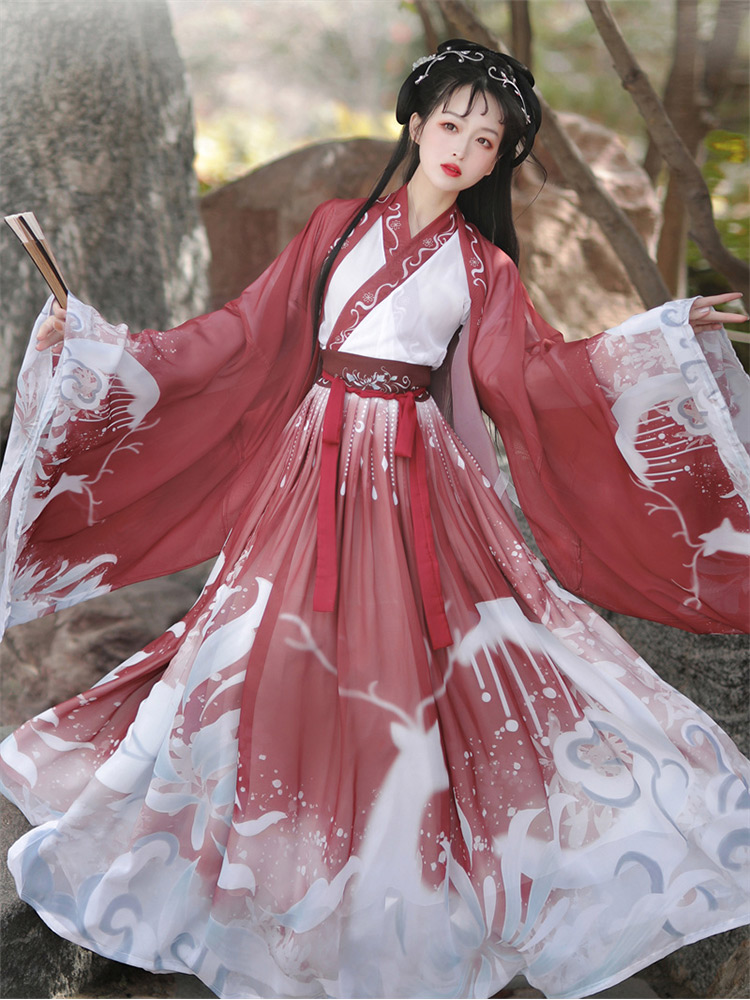Introduction
Chinese traditional dress, often referred to as Hanfu or Zhongshan suit, encompasses a rich tapestry of history, culture, and symbolism. These garments have evolved over millennia, reflecting the diverse customs, social status, and aesthetic preferences of various dynasties and regions within China. From the flowing robes of ancient dynasties to the tailored elegance of modern interpretations, Chinese traditional dress continues to captivate the imagination with its timeless beauty and cultural significance.
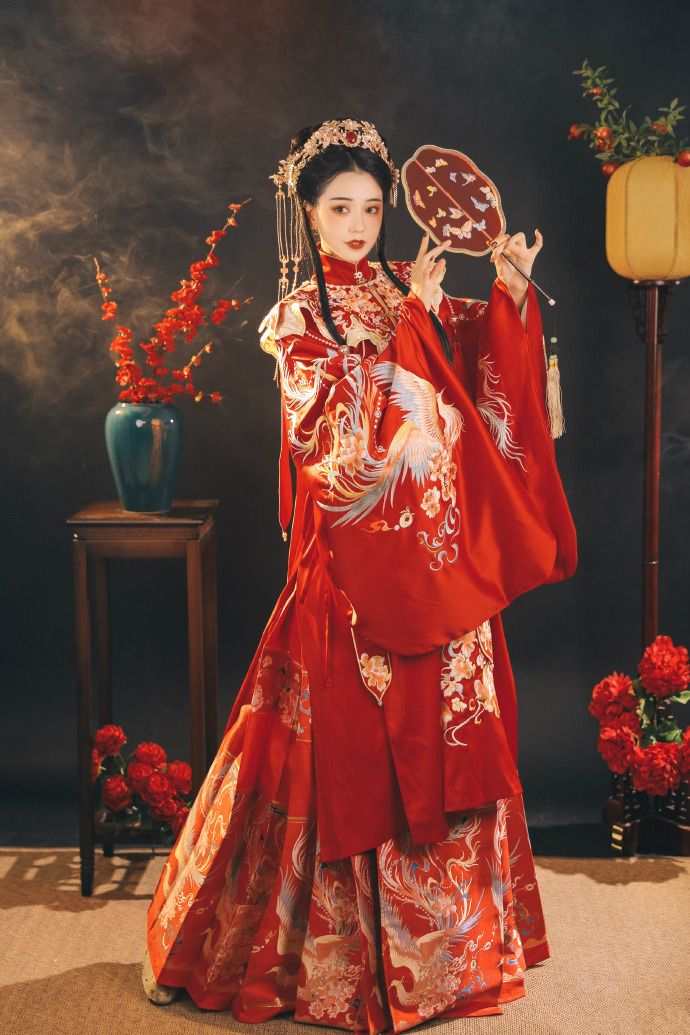
1. Historical Roots:
The history of Chinese traditional dress can be traced back thousands of years, with early forms dating as far back as the Xia, Shang, and Zhou dynasties. During this time, garments were primarily made from silk and other luxurious fabrics, adorned with intricate embroidery and decorative motifs. Each dynasty had its own distinctive style of dress, influenced by factors such as geography, climate, and cultural exchange with neighboring regions.
2. Symbolism and Significance:
Chinese traditional dress is steeped in symbolism, with every garment and accessory carrying deeper cultural meanings. Colors, patterns, and decorative elements often convey messages related to wealth, status, marital status, and spiritual beliefs. For example, the color red symbolizes good fortune and joy, making it a popular choice for wedding attire, while dragon motifs represent imperial power and prosperity.
3. Regional Diversity:
China’s vast geographical expanse has given rise to a diverse array of regional dress styles, each reflecting the unique customs and traditions of local communities. From the vibrant colors and intricate embroidery of Guangdong’s Cantonese attire to the understated elegance of Jiangnan’s silk qipao, Chinese traditional dress showcases the country’s cultural richness and ethnic diversity.
4. Evolution and Adaptation:
Over the centuries, Chinese traditional dress has undergone various transformations in response to changing political, social, and economic conditions. During the Qing dynasty, for example, the Manchu rulers introduced the qipao, a form-fitting garment with a high neckline and side slits, which became popular among Han Chinese women. In the early 20th century, revolutionary leader Sun Yat-sen promoted the Zhongshan suit as a symbol of national unity and modernity, inspiring a shift towards Western-style clothing.
5. Revival and Renewal:
In recent years, there has been a resurgence of interest in Chinese traditional dress, fueled by a growing sense of cultural pride and identity. Enthusiasts and designers have sought to revive ancient dress styles and techniques, incorporating contemporary elements to create modern interpretations that resonate with today’s fashion trends. This revival movement has not only sparked a renewed appreciation for China’s sartorial heritage but also fostered cross-cultural exchange and dialogue on a global scale.
6. Cultural Heritage and Identity:
Chinese traditional dress plays a vital role in preserving and promoting China’s cultural heritage and national identity. It serves as a tangible link to the country’s rich history and cultural traditions, fostering a sense of pride and belonging among Chinese people both at home and abroad. In an increasingly globalized world, Chinese traditional dress serves as a powerful symbol of cultural resilience and continuity, bridging the past with the present and inspiring future generations to cherish and celebrate their cultural roots.
7. Contemporary Influence:
Beyond its cultural and historical significance, Chinese traditional dress continues to influence contemporary fashion and design trends around the world. From haute couture runways to streetwear collections, designers draw inspiration from traditional Chinese motifs, fabrics, and silhouettes, infusing modern garments with elements of timeless elegance and sophistication. This cross-pollination of styles not only showcases the versatility and adaptability of Chinese traditional dress but also underscores its enduring relevance in today’s fashion landscape.
8. Celebrating Diversity and Inclusion:
As interest in Chinese traditional dress continues to grow, there is a growing recognition of the need to embrace diversity and inclusivity within the community. Efforts are being made to celebrate the myriad expressions of Chinese identity, including those of ethnic minorities and marginalized groups. By fostering a more inclusive and equitable representation of Chinese traditional dress, we can ensure that its beauty and significance are accessible to all, regardless of background or heritage.
9. Preserving Heritage for Future Generations:
As custodians of China’s cultural legacy, it is incumbent upon us to safeguard and preserve the heritage of it for future generations. This entails not only documenting and studying historical garments and techniques but also passing on traditional craftsmanship skills to younger artisans. By investing in education, research, and conservation efforts, we can ensure that Chinese traditional dress continues to thrive as a living expression of our shared cultural heritage.
10. Embracing the Future:
As we look to the future, Chinese traditional dress remains an enduring symbol of China’s rich cultural heritage and artistic legacy. Whether worn for special occasions, cultural ceremonies, or everyday wear, these garments serve as a tangible link to our past and a source of inspiration for generations to come. By embracing and celebrating the beauty and diversity of Chinese traditional dress, we honor our ancestors, enrich our cultural tapestry, and forge connections that transcend time and space.
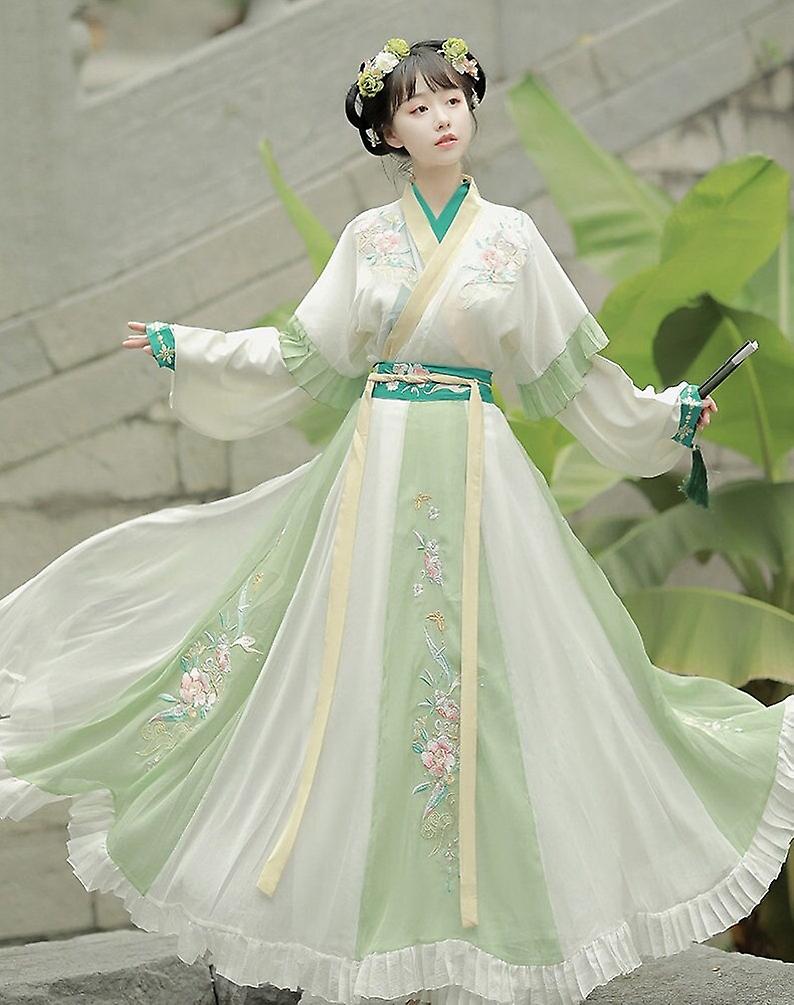
11. Cultural Preservation and Globalization:
In an era of globalization, Chinese traditional dress faces both opportunities and challenges. While increased connectivity has facilitated the spread of Chinese cultural influences worldwide, it has also led to concerns about cultural appropriation and commodification. Efforts to preserve and promote Chinese traditional dress must therefore strike a balance between cultural authenticity and adaptation to contemporary tastes.
12. Rituals and Ceremonies:
Chinese traditional dress plays a central role in various rituals and ceremonies, from weddings and festivals to religious observances and ancestral worship. Each garment is imbued with symbolic meaning, serving as a visual expression of cultural identity and social status. Through the meticulous craftsmanship and attention to detail, these garments convey reverence for tradition and a sense of continuity with the past.
13. Fashion Innovation and Collaboration:
Contemporary designers and fashion houses are increasingly exploring innovative ways to reinterpret Chinese traditional dress for modern audiences. Collaborations between traditional artisans and avant-garde designers have resulted in groundbreaking collections that blend ancient techniques with cutting-edge aesthetics. By pushing the boundaries of creativity and experimentation, these collaborations breathe new life into Chinese traditional dress while honoring its timeless elegance.
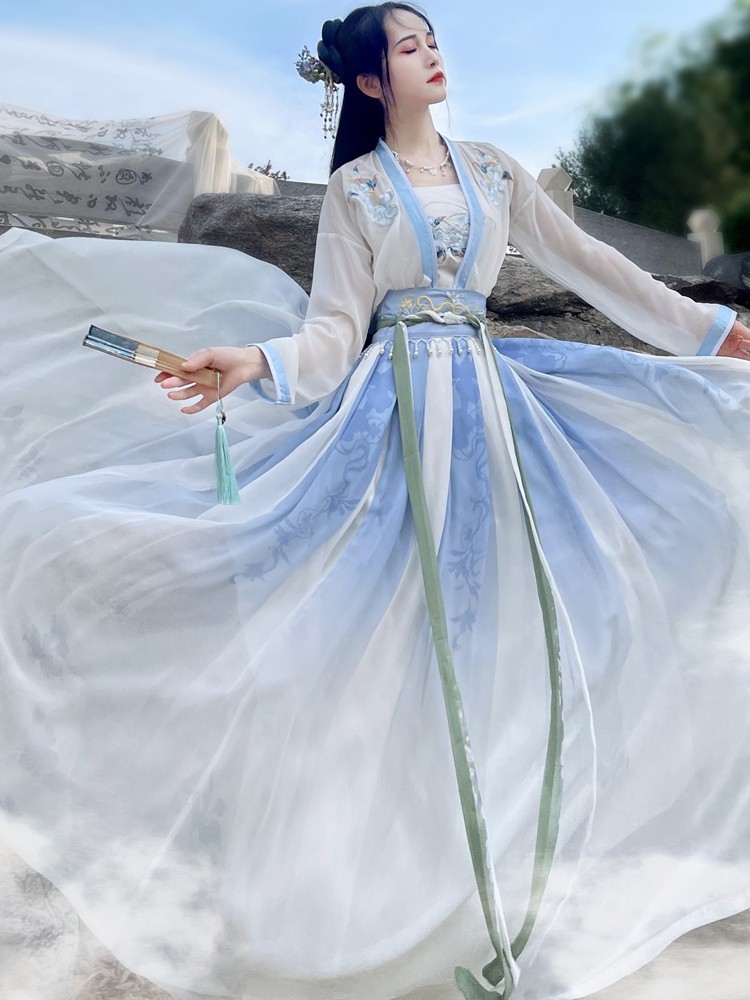
14. Sustainability and Ethical Fashion:
As concerns about environmental sustainability and ethical labor practices grow, there is a renewed focus on traditional craftsmanship and artisanal techniques. Chinese traditional dress, with its emphasis on handcrafted textiles and labor-intensive production methods, embodies principles of sustainability and ethical fashion. By supporting local artisans and preserving traditional skills, we can create a more sustainable and socially responsible fashion industry.
15. Cross-Cultural Exchange and Influence:
Chinese traditional dress has historically been shaped by interactions with neighboring cultures along the Silk Road and beyond. Today, it continues to inspire and influence global fashion trends, fostering cross-cultural exchange and dialogue. From the runways of Paris to the streets of New York, elements of it can be seen in contemporary fashion collections, showcasing its enduring appeal and relevance on the world stage.
16. Educational Initiatives and Cultural Awareness:
Educational initiatives aimed at raising awareness of it play a crucial role in preserving its cultural heritage. Through museums, exhibitions, and educational programs, people of all ages can learn about the history, symbolism, and craftsmanship behind these garments. By fostering a deeper appreciation and understanding of it, we can ensure its continued relevance and significance in the cultural landscape.
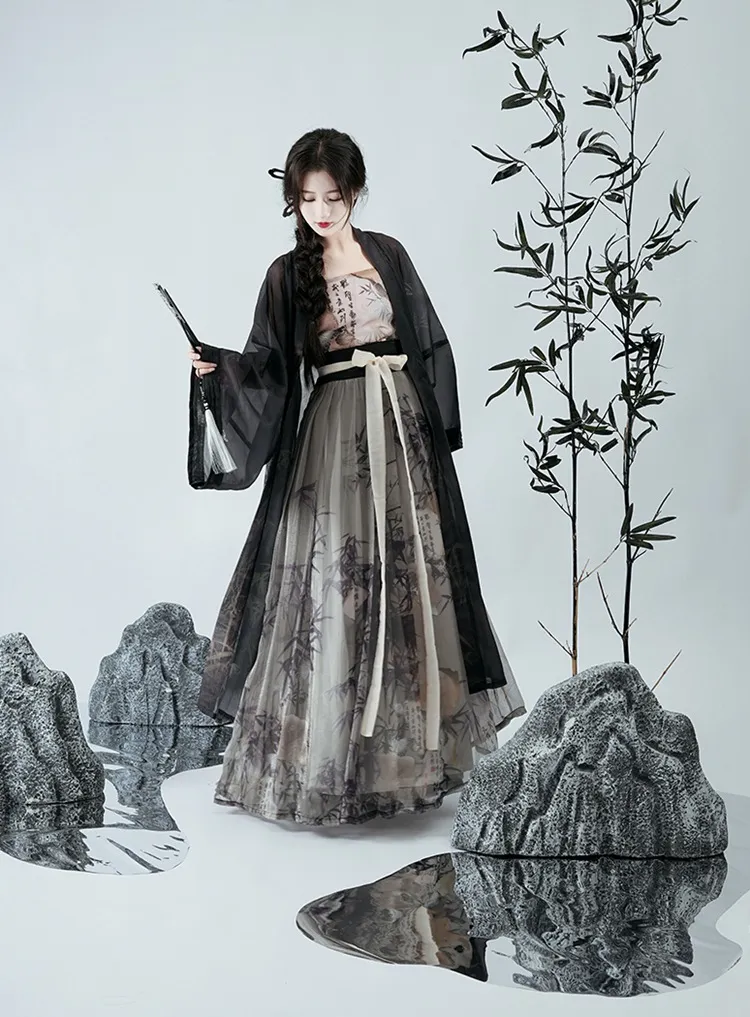
17. Empowerment and Self-Expression:
For many individuals, wearing Chinese traditional dress is an act of empowerment and self-expression. Whether donning a qipao for a special occasion or incorporating traditional motifs into everyday attire, these garments serve as a means of connecting with one’s cultural heritage and asserting one’s identity. In a rapidly changing world, it provides a sense of grounding and belonging, reminding us of the values and traditions that unite us as a global community.
18. Cultural Diplomacy and Soft Power:
It serves as a powerful tool for cultural diplomacy and soft power projection on the global stage. Through cultural exchanges, diplomatic events, and international festivals, it showcases the country’s rich cultural heritage and fosters mutual understanding and appreciation among nations. By promoting cultural exchange and dialogue, we can build bridges of friendship and cooperation that transcend political boundaries and promote peace and harmony.
19. Future Trends and Innovations:
Looking ahead, the future of it is ripe with possibilities for innovation and creativity. Advances in technology, materials science, and sustainable fashion practices offer new avenues for experimentation and exploration. Whether through digital design tools, eco-friendly fabrics, or collaborative partnerships, Chinese traditional dress continues to evolve and adapt to meet the needs and aspirations of contemporary society.
20. Personal Reflection and Connection:
At its core, the beauty of it lies in its ability to evoke a sense of personal reflection and connection with one’s cultural roots. Whether worn as a gesture of respect for tradition or as a statement of individual style, these garments carry with them a sense of history and heritage that transcends time and place. In embracing Chinese traditional dress, we embrace not only the past but also the future, weaving a tapestry of cultural continuity and renewal that enriches us all.
